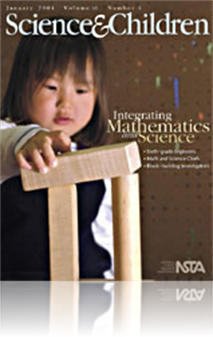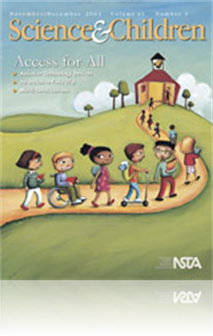All Science and Children resources
Journal Article
The Science and Mathematics of Building Structures
Everyday activities—like building with blocks—can be the basis for meaningful learning that meets national educational standards in science and mathematics. Preschool students played with different kinds of building blocks and were encouraged to ...
Journal Article
Teaching through Trade Books: Rock Wonderings
Rocks, as part of the Earth science curriculum, are an integral part of the National Science Education Standards. These trade book-inspired investigations for students in grades K-3 and 4-6 encourage readers to investigate the world around them....
Journal Article
Discovering Flowers in a New Light
Although students may have made observations of plants and flowers, not many have looked closely at their various structures or seen the colorful designs of flowers that are only apparent when magnified. The 5E learning cycle described in this articl...
Journal Article
When approached in the appropriate manner, food can be a useful teaching tool to develop understandings of science and mathematics concepts. This engaging series of food science inquiry lessons builds student skills in measurement, data collection, c...
Journal Article
Science 101: How do insects survive winter?
This month's column explains how insects survive in the winter. ...
Journal Article
Teaching Through Trade Books: Differences and Diversity
Diversity is not an unusual topic in classrooms studying biology. From the wondrous variety of animals and plants in the rain forest to the microcosm present in soil, most teachers have taught diversity through one route or another. However, it is pr...



